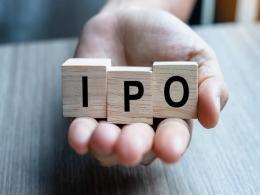A few months before, I predicted hyperlocal will start eating e-commerce and more transactions will start to piggyback on local m-commerce along with the offline transactions. And the homogenised e-commerce will start looking at local commerce as the next growth area, not as the part of their current offering, but as the strategic investments/acquisitions of the local players.
We have seen that has started happening and we at PayMango have resisted such offers - given e-commerce comes with the baggage of their traditional thinking (traditions change whenever there is a disruption). Let’s look at what is causing this huge clamour to get a pie of hyperlocal even though the basic business model and value proposition of e-commerce is at odds with hyperlocal.
E-commerce was once a medium to replace ‘middleman’ and but then pivoted to being a network of middlemen (marketplace)—a few ‘privileged’ middlemen trying to control and disrupt the traditional supply chain. Have you ever wondered why there is big craziness around GMVs (Is there anything substantial apart from crazy valuations?). Development and innovation of an ecosystem is directly proportional to the money being traded/routed in that ecosystem. And it looked like, e-commerce biggies wanted to slowly choke local commerce and create a space for themselves instead of addressing a gap (remember, investor pitch 101?). And with decades of monopoly, they hope to become primary channel for commerce. But here’s the typical twist - hyperlocal 1.0 started eating into their transactions.
So one would wonder why would an e-commerce firm invest/acquire a hyperlocal business? Their goals are not only different but entirely opposite. Where one wants to build a local ecosystem, the others want to annihilate it and replace it with their own (via deep discounting). The reason seems simple - if you can’t compete then acquire it. (MBA 101?)
Can we think of this as match made in heaven? (Strategy to expand into real-time fulfillment categories like groceries unthinkable in online retail.) But then, we observe a war going on between e-commerce and hyperlocal. E-commerce offering one-hour/two-hour deliveries. And hyperlocal groceries offering e-commerce categories like mobiles (iPhone 6s). So what do you think?
IMHO, hyperlocal players are like e-commerce ones in its initial days. Hyperlocal 1.0 is about just buying from a ‘brand’ and leaving the rest to them. What consumer is currently buying from them is ‘discount’ and ‘deliveries’ because they still pick up the goods from the store next door. When the scale will build up, they will pivot to hyperlocal warehouses (‘hubs’ in hyperlocal terminology) and compete with the local ecosystem. So their agenda and territory seems quite similar with traditional e-commerce.
But then there are a several B2C delivery startups (with the same hub-and-spoke model as hyperlocal 1.0) mushrooming in every corner of the city. Bringing down the price of delivery within 5 kms from Rs 50 to just Rs 15 in last six months (every other month a new hyperlocal delivery startup gives us a proposal that is more competitive than the last one). In my opinion, the prices of hyperlocal delivery would stabilise to something around Rs 10. Because that's what I tip a delivery boy (call me frugal) when there is no delivery charge on the local order. And this change just enables the local store wala to be as ‘effective’ as hyperlocal 1.0 in the store’s vicinity. What they still need despite the said hyperlocal revolution is a platform to compete with e-commerce and its hyperlocal affiliates. And from our PayMango on-field experience about 99.9 per cent of the local stores remain untouched by hyperlocal 1.0. Counterintuitive right?
One would argue once the hyperlocal builds scale it would be easier to pivot to bring in the next door store which would have been fine argument if the product and operations of doing that would have not differed significantly. Innovations at the merchant side will eventually define which product will win, because as we have seen in the e-commerce story till now, consumer really does have no loyalty towards homogenous product offerings (plus/minus some user experience) and go where the best price is available.
This is what a winning product in the hyperlocal will have to do and first mover advantage doesn’t really matter if business and product have no stickiness. We have already seen that happening with a few food startups. Someone somewhere has rightly said, “if your only leverage is operational efficiency, eventually others will catch up with you.”
Gajinder Singh is founder and CEO of hyperlocal 2.0 platform www.paymango.com. Views are personal.






